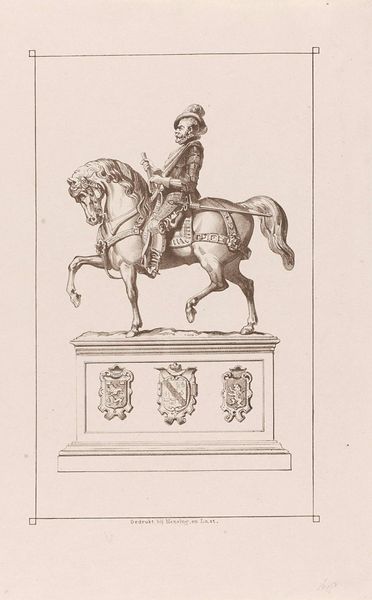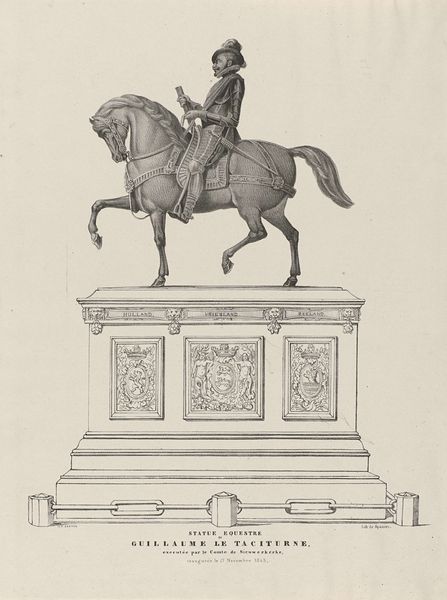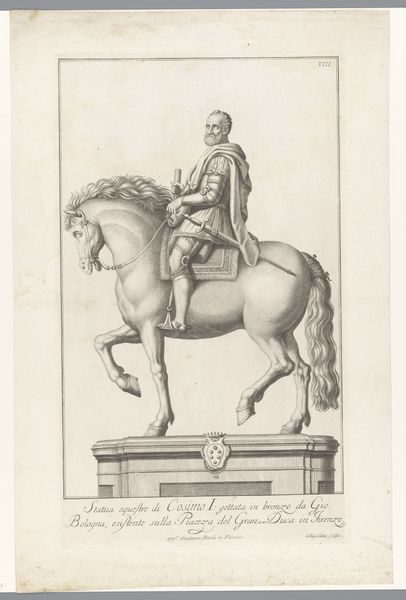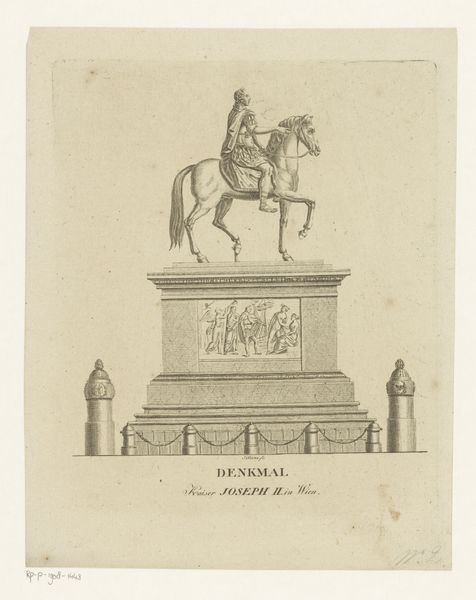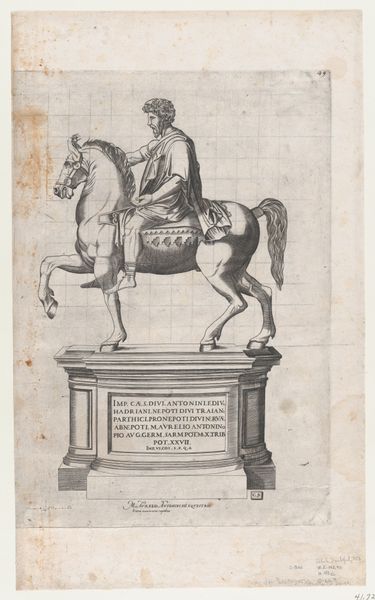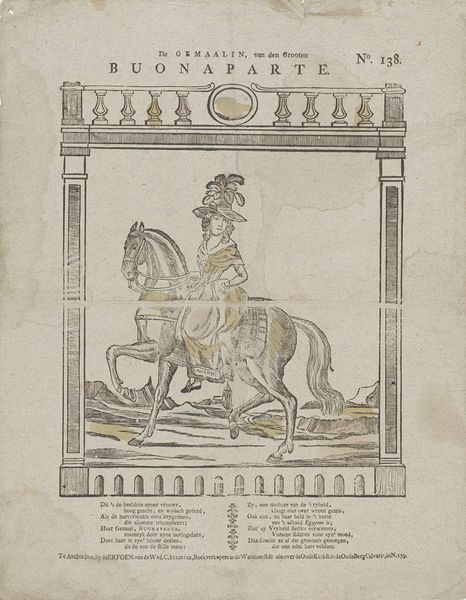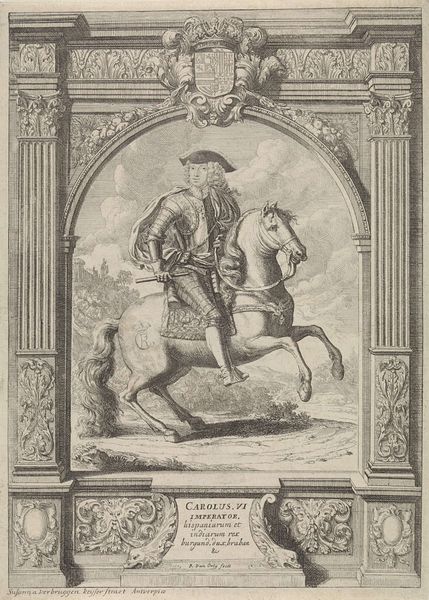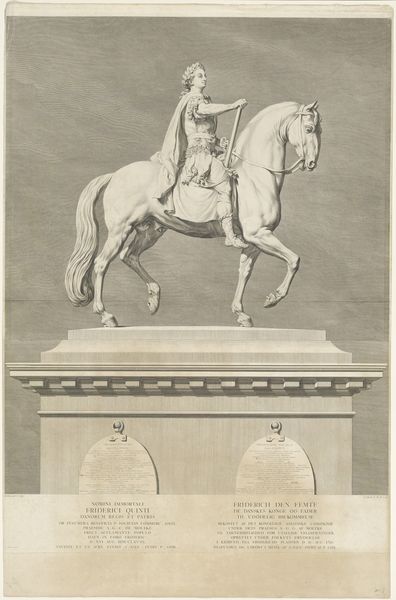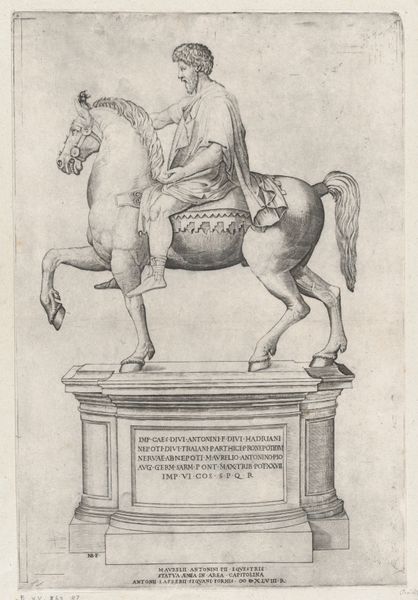
Ruiterstandbeeld van Willem I, prins van Oranje, op het Noordeinde te Den Haag 1845 - 1863
0:00
0:00
print, engraving
#
portrait
# print
#
history-painting
#
academic-art
#
engraving
#
realism
Dimensions: height 361 mm, width 267 mm
Copyright: Rijks Museum: Open Domain
Editor: Here we have an engraving from 1845-1863 titled "Equestrian Statue of William I, Prince of Orange, on the Noordeinde in The Hague". It's incredibly detailed. What stands out to you in terms of artistic choices and how they contribute to meaning? Curator: This engraving provides a fascinating glimpse into the 19th-century obsession with memorializing historical figures through material objects. Consider the process of creating an engraving versus the more immediate medium of painting. An engraving like this necessitates a slower, more deliberate engagement with the subject. Editor: Slower how? Curator: The meticulous labor of the engraver – think of the hours spent transferring the statue’s form onto the metal plate, and the subsequent printing process. The choice of engraving emphasizes the subject's historical weight and the permanence of his legacy, something not unlike the monument itself, don’t you think? Furthermore, the choice to replicate the sculpture through print, and then disseminate it through printed materials is fascinating in terms of accessibility and how art reinforces societal structure. Editor: That's an interesting point about the process influencing its impact. So the choice of material itself makes a statement? Curator: Absolutely. The reproductive nature of engraving opens up discussions of the democratization of imagery, even when the image is that of a ruling class. The means of its creation speak volumes about its function and audience. What might this say about mid-19th century Dutch society, especially as a statement of emerging nationalism? Editor: I hadn't considered the social impact of the medium itself. This deeper look at the materiality and the making of the art piece gives so much more historical context. Thank you! Curator: Indeed. Material considerations bring us to the socio-political framework of its making. Thinking about the production process offers fresh ways to approach our understanding of visual art and the society that supports its production.
Comments
No comments
Be the first to comment and join the conversation on the ultimate creative platform.
